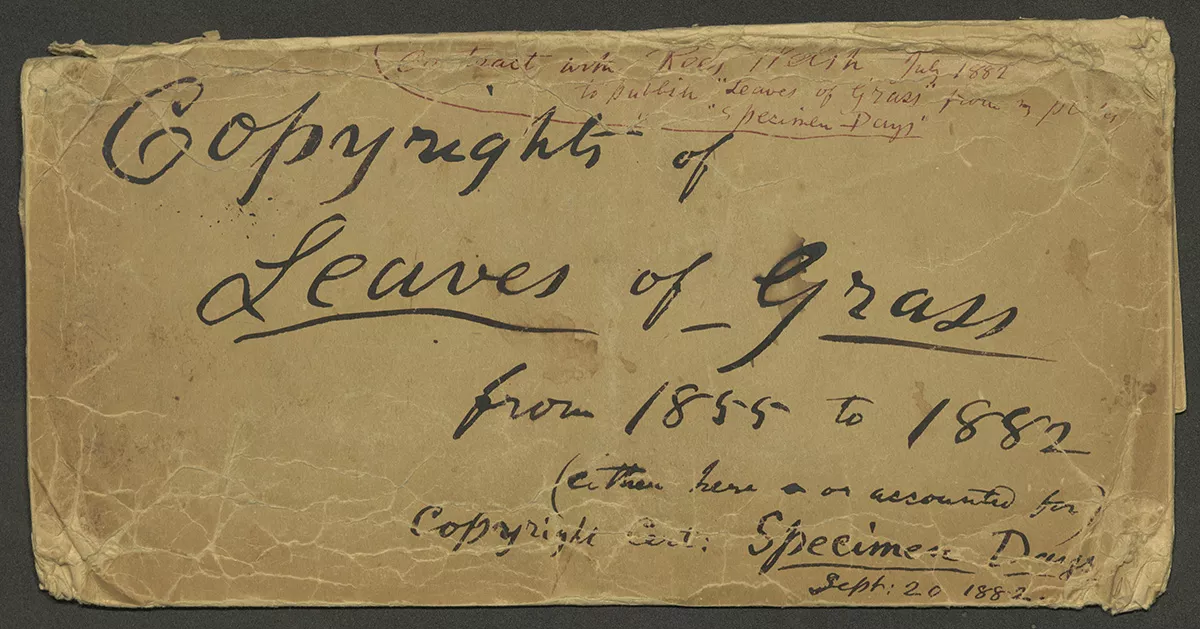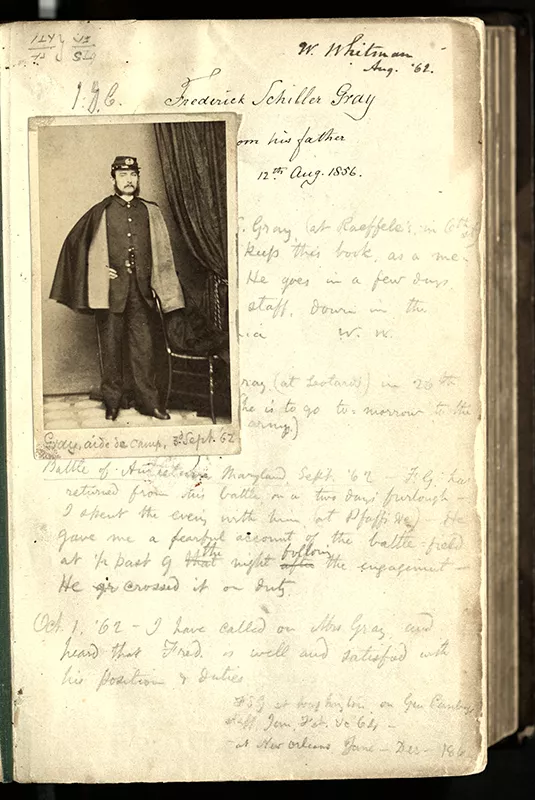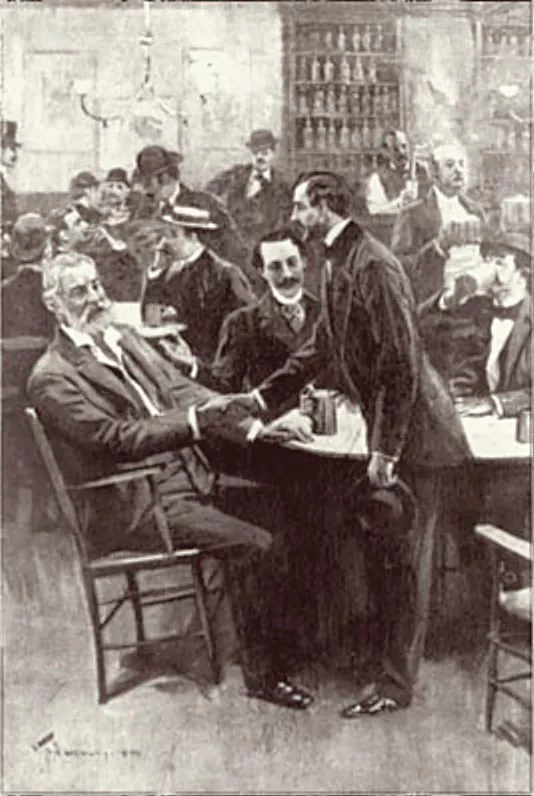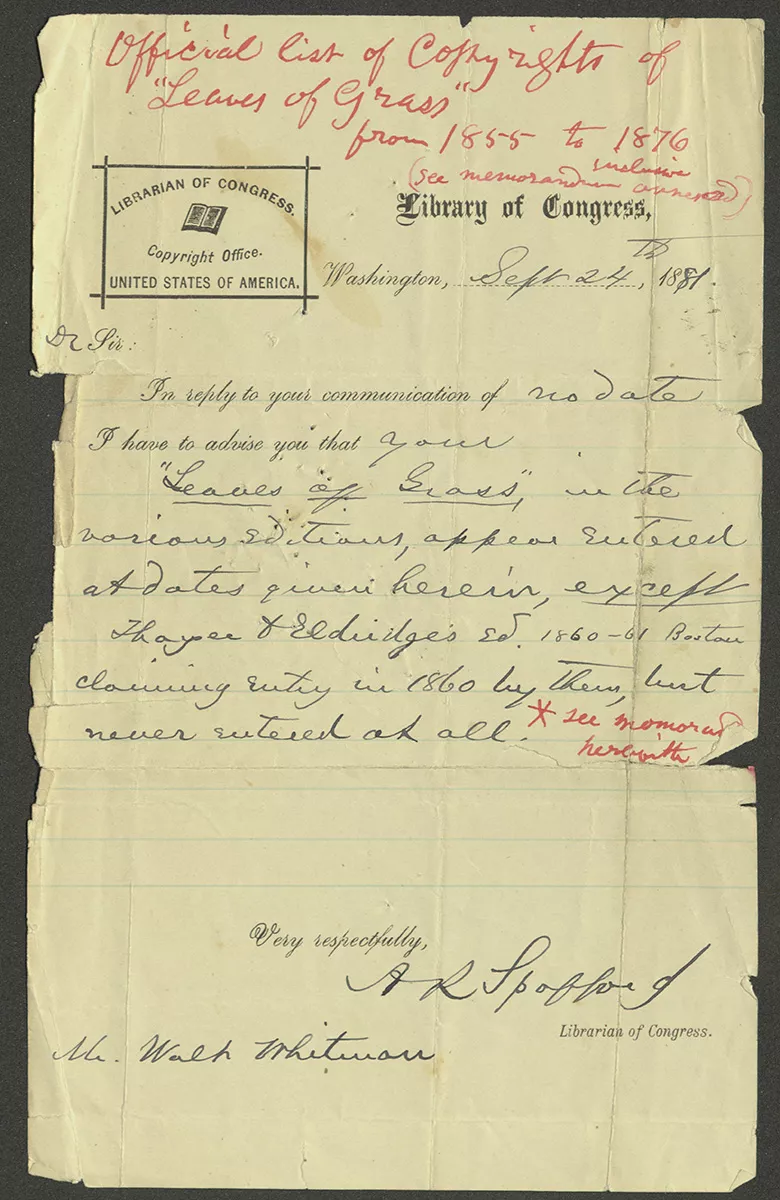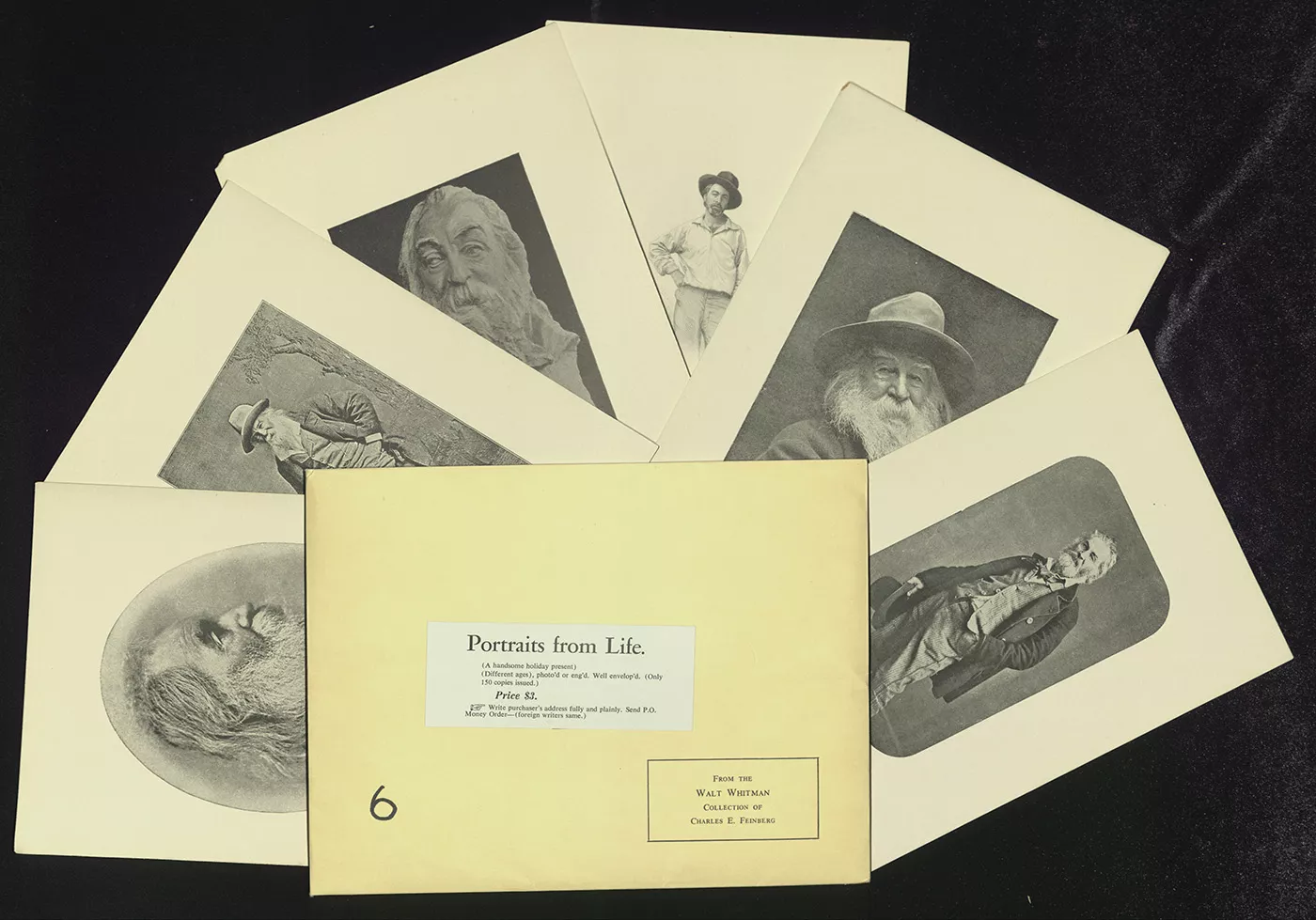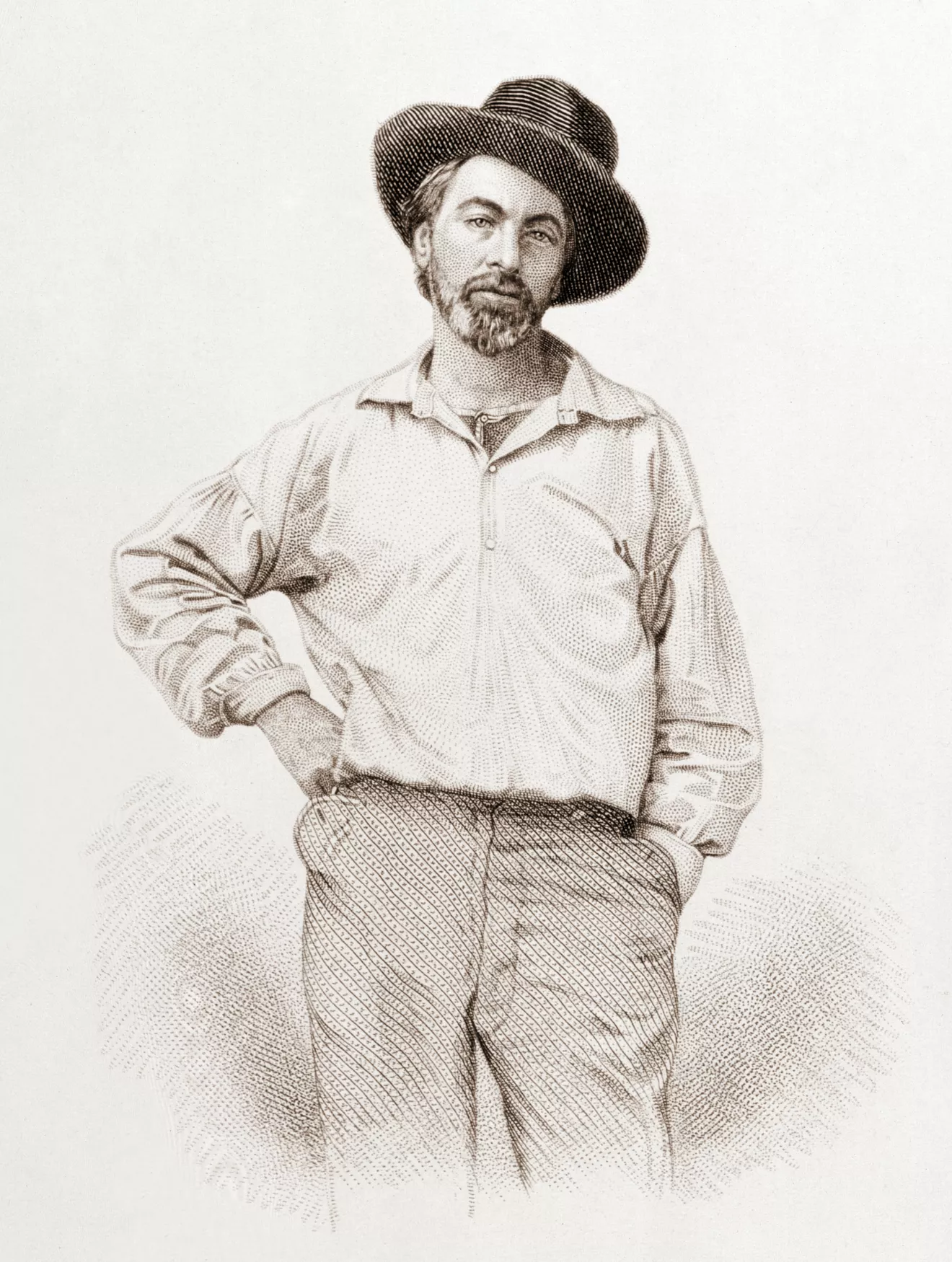
This Spring come celebrate the 200th birthday of the “Good Gray Poet” Walt Whitman at the exhibition “Poet of the Body: New York’s Walt Whitman” from May 15- July 27, 2019 at the Grolier Club in New York City. The exhibition is curated by NYU professor and Bryn Mawr GSAS alumna Karen Karbiener (M.A., English ’90) and Susan Jaffe Tane, one of the world’s foremost Whitman collectors. The event will feature rare books, manuscripts, and never before seen artifacts related to the life and work of the poet, particularly his earliest and most obscure years in which he resided on Long Island, in Brooklyn and his beloved “Mannahatta.” Artifacts reflecting his influence on modern book arts and his reception in modern pop culture serve as reminders of Whitman’s enduring cultural legacy.
The event is part of a larger series of Walt Whitman related programming organized in coordination with the Walt Whitman Initiative, a nonprofit organization directed by Dr. Karbiener that forms a community around the life and work of the poet.
“Poet of the Body” celebrates Whitman as the nation honors his 200th birthday this May 31st. The exhibition curators have drawn together a range of remarkable treasures from Susan Tane’s Whitman collection, the Feinberg Whitman Collection at the Library of Congress, the New York Public Library’s Berg Collection, Brooklyn College Library, and private family collections, and Bryn Mawr’s own Special Collections.
The event will feature several items on loan from the Walt Whitman collection held in the Rare Books and Manuscripts collections of the College. The collection was given to Bryn Mawr by alumnae Julia Harned Pardle (’39) and Louise Harned (’50), whose grandfather Thomas Harned was one of Whitman’s literary executors. Whitman had no heirs, so he left his estate to his three closest friends. This meant that most of his estate eventually spread out to private collectors, although many of his papers are now in the Library of Congress. However, some arrived in Special Collections through the Harned connection.
Bryn Mawr has a number of books from Whitman’s personal library, including signed and annotated copies of Homer, Shelley, and Milton. Even though Whitman was a prolific American poet, he was not a major book collector. Dr. Karbiener attributes this to his lifetime of financial struggle in an age where books were somewhat of a luxury item. Bryn Mawr’s collection of Whitman’s library gives a window into the few books he revered enough to own or were given as gifts from close acquaintances.
Whitman’s book collection is also a window into the poet’s innermost thoughts and feelings about the works he did read. He often left annotations in the book page margins and was especially fond of leaving notes about the friends that gifted him his books. This has allowed Dr. Karbiener to draw out intimate details about the poet’s personal relationships.
A Bryn Mawr treasure that will be exhibited prominently in “Poet of the Body” is Whitman’s personal copy of Frederic Hedge’s Prose Writers of Germany. It had previously been owned by Fredrick Schiller Gray, soldier at the battle of the Antietam the founder of the Fred Gray Association, which Dr. Karbiener notes is possibly the first gay men’s society in America. The group was a social club that biographers have described as promoting “male-male affection” and included Whitman as a member.
Whitman and Gray were close friends and possibly lovers. Gray gave Whitman his copy of Prose Writers of Germany on August 29, 1862. The poet affixed two photographs of Gray into its inner pages – among his only known photos. Around the photos Whitman wrote brief reminiscences about his time with Gray with especial reference to their leisure time together at Pfaff’s Cellar Saloon. The bar had a bohemian vibe and was known to accept a diverse crowd from all over New York’s vibrant mid-19th century subcultures, who came to Pfaff’s for liberation, escape, and comradery. It might have been America’s first gay bar. Pfaff’s was the center of Whitman’s social life during his nascent years as a poet.
The exhibition is timed to coincide with the celebrations of the 50th anniversary of New York’s Stonewall riots, events that would forever alter the national discourse on gay rights and liberation in America. As a gay poet who struggled to define and express his sexual identity long before the word “homosexual” was in common parlance, Whitman gave an early expression to the LGBTQ rights movement that would only take action over 100 years after he found camaraderie and love at Pfaff’s. Bryn Mawr’s copy of Whitman’s Prose Writers of Germany, profusely and enthusiastically annotated by Whitman, provides a rare glimpse of Whitman’s relationship with the namesake of the Fred Gray Society and can be considered a landmark in the history of gay America.
Other materials from the Walt Whitman Papers at Bryn Mawr shed light on the more practical side of his writing life. Dr. Karbiener has drawn into the exhibition documents demonstrating Whitman’s meticulous control over the copyrights to his works. In a time where copyright laws were murky, Whitman fiercely guarded his intellectual property through careful record keeping. As a man with working class roots, Whitman was particularly worried about getting ripped off by predatory publishers waiting for usage rights to expire. He was acquainted with Ainsworth Rand Spofford, the librarian of the Library of Congress from 1864 to 1897, and persistently sent notes asking about his own work’s copyright expirations dates – notes that are in part held in Special Collections and will be on display in the “Poet of the Body” exhibition.
The most photographed American poet of the 19th century, Whitman was particularly keen in disseminating his image alongside his poetry, such as the 1876 edition of Leaves of Grass featuring “Portraits from Life” interspersed between his poems.
Later in his life, Whitman planned to release an album of self-portraits with no accompanying poems, anticipating the more modern phenomenon of selfie culture. The album was to feature images of himself printed on carefully selected and sized cardstock. The cards were then to be tied with ribbon and sold. The project was never finished, but later Charles E. Feinberg, one of America’s prominent collectors of manuscripts and ephemera went ahead and made the prints as Whitman indicated. Copies of Feinberg’s images of Whitman are also part of Bryn Mawr’s Collection and prominently featured in the Grolier Club exhibition.
“Poet of the Body: New York’s Walt Whitman”opens on May 15 and runs through July 27, 2019 at the Grolier Club in New York City. A book of the same title, written by Karbiener and with a preface by Tane, will be available at the Club and from Oak Knoll Books. Curator of Rare Books and Manuscripts Marianne Hansen provided invaluable assistance to Karbiener as she explored the provenance and particular importance of Bryn Mawr’s Whitman holdings.
For more information on the Grolier Club, its Whitman exhibition (which is free and open to the public), and related events (including curatorial tours, lectures, and an all-day Whitman symposium on June 1), please visit https://www.grolierclub.org A calendar of events celebrating Whitman’s 200th birthday around the country can be found by clicking here.
